 |
 |
 |
| |
HIV and Aging at CROI 2008
|
| |
| |
Reported by Jules Levin
Trends:
population of HIV infected individuals is aging since cART became available, 25% in crease in percent >50 yrs old in recent several years.
Increase of new HIV/AIDS infections among older women in US and western Europe.
Delayed presentation for care among older patients: older persons are often not tested for HIV because its perceived they are not at risk; symptoms may be confused as being related to being older; they may have received less education about risk reduction; they are not in the generation of safer sex; they may feel they don't need condoms for various reasons; seniors may have more free time and rediscover sexuality.
More testing and prevention campaigns targeting older individuals is called for.
There is faster HIV disease progression and more non AIDS-defining conditions with older age.
Of note, a study presented last year from the VA Aging cohort older HIV-negatives had greater rates of comorbidities than older HIV-positives for hypertension, diabetes, vascular and pulmonary BUT older HIV-positives had higher rates than older HIV-negatives of liver and renal disease, and rates of liver and renal disease are increasing with age.
From the DAD Study, the rates of fatal non-AIDS-defining malignancies is 5 times higher than rates for AIDS-defining malignancies among older HIV-infected (65-69 yrs) and increases with age after 50 yrs old.
A study published in the Jnl of Gerontology A Biol Sci Med Sci in 2007 showed that HIV+ men were more frail than HIV-negative men. After 8-12 years living with HIV odds ratio of being more frail was 15 times. A 65-yr old HIV-negative person has similar frailty as a 55 yr old HIV+ infected for 0-4 yrs. So, the longer one has HIV the more frail they will become. So, at older ages HIV-positives will be more frail.
Better adherence of older persons translates into better virological outcome and partially better CD4 response but clinical outcome is blunted by age-related co-morbidity/mortality.
Renal function declines predictably in populations (but not in individuals) as a function of age and/or accumulated disease-related renal injury.

In 2001, 4% were >60 yrs old & 14% were 50-59 yrs old. By 2005, 6% were >60 and 19% were 50-59%, and this continues to increase on a yearly basis. So 18% were 50 or older in 2001 and 25% are 50 or older in 2005, that's an increase of over 33% in the number of patients older than 50 yrs over 4 years.
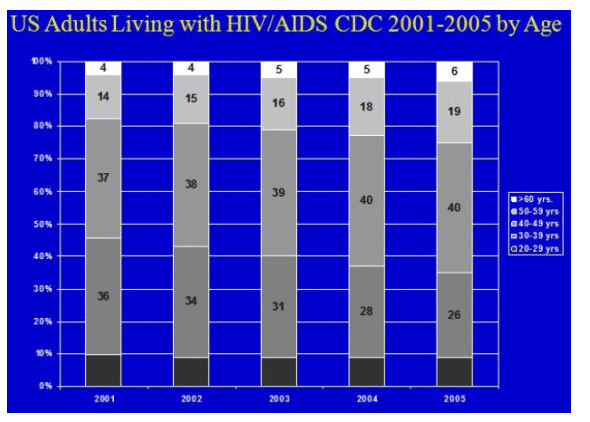
In the SWISS Cohort, 25% in 2006 are older than 50 yrs, while in 1994 it was 10%and in 2003 it was 20%. From 2003 to 2006 we see an increase of from 20% to 25%, that is a 25% increase in the number of patients over 50 yrs old.
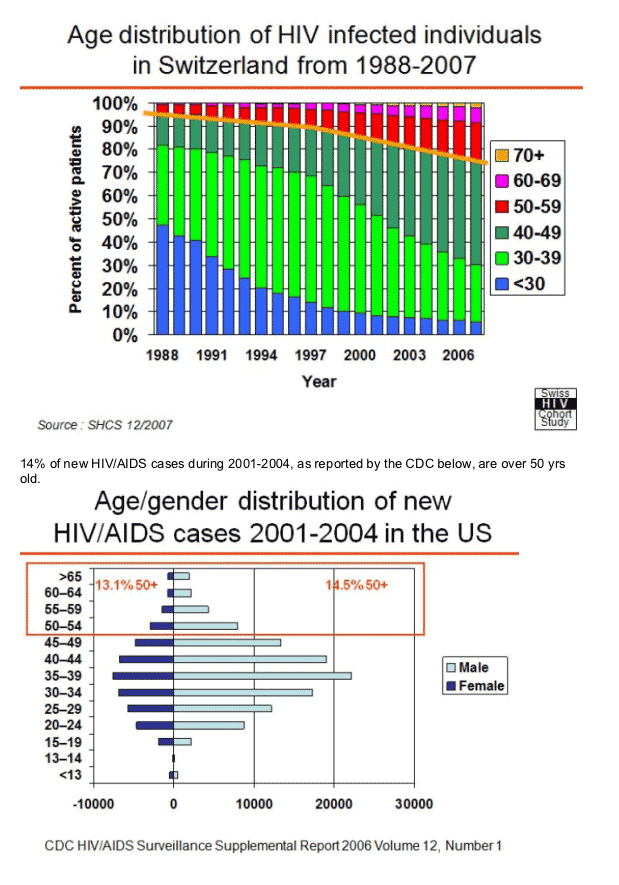
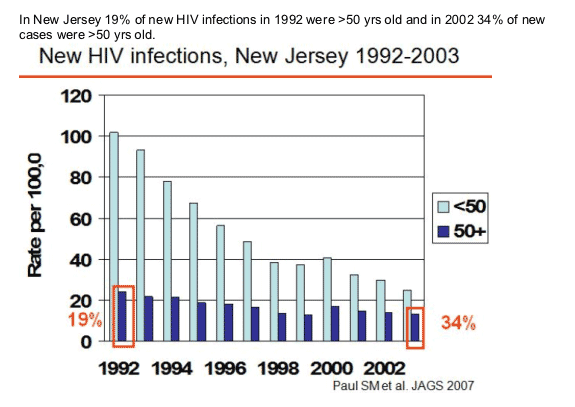
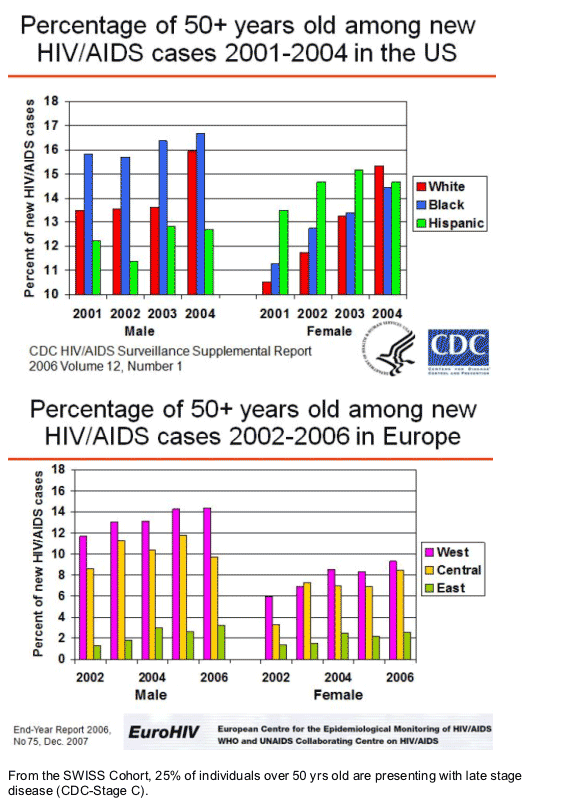
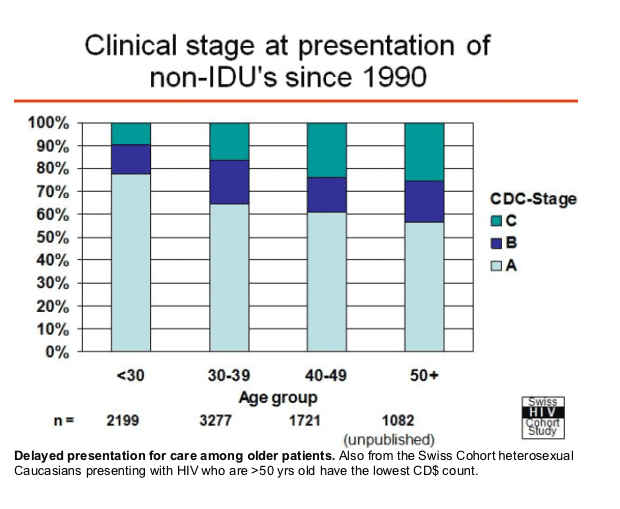
This slide from the CDC shows the breakdown by race for the percent of 50 yr olds among new HIV/AIDS cases. The most alarming trend illustrated here is the increasing percent of white women >50 yrs old being diagnosed, increasing from 10% in 2001 to 15% in 2004. So, of those over 50 being newly diagnosed with HIV, more and more white women are being newly diagnosed. Also, the increases in women of all ethnicities (Black, White, Hispanic) are noteworthy. There are continuing increases of women of all ethnicities who are being diagnosed with HIV/AIDS at >50.
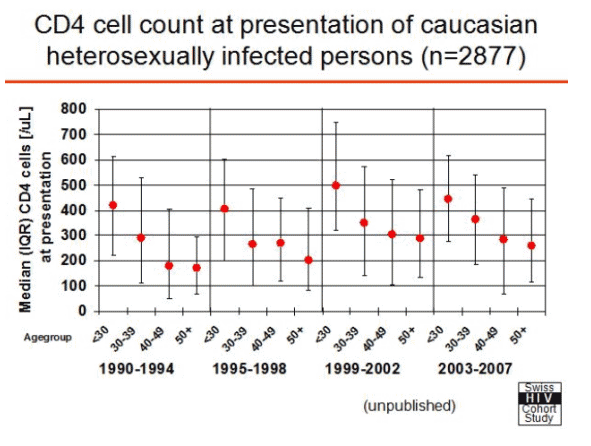
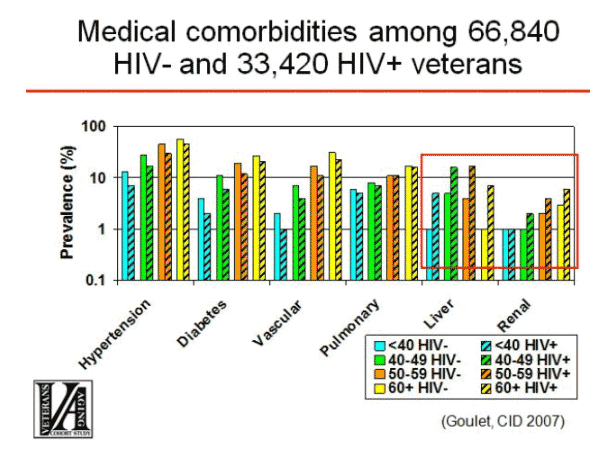
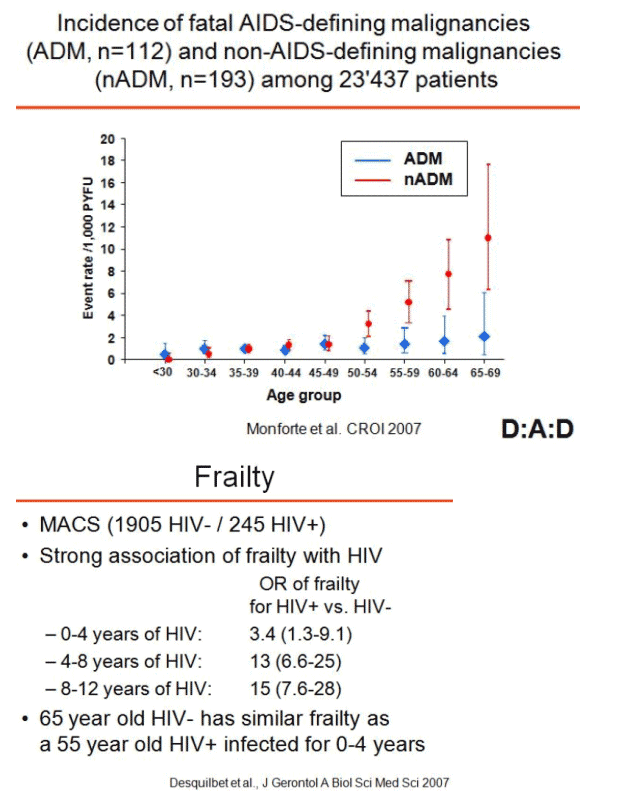
After entering care and receiving HAART life expectancy increases quite a bit. Of note, take a 50 year old in this table who presents for care with a CD4 >500. The CD4 count at presentation for care is relevant to life expectancy. The higher the CD4 count the greater the life expectancy. This suggests to me that preservation of the immune system is relevant because it can perhaps prevent aging but perhaps more importantly can preserve the immune system and reduce risk for non-AIDS comorbidities. Early HIV research suggested that HIV may accelerate the aging process so intervention with HAART may slow this affect down. In a 50 yr old presenting for care with a CD4 count of 750 upon presentation-- without care and HAART life expectancy is 10 years, that's is living until 60. With care and HAART life expectancy is to almost 70 years.
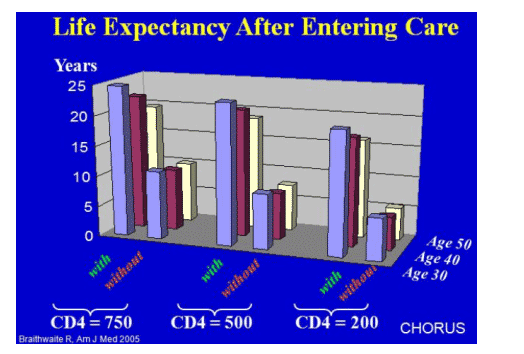
Non-AIDS deaths have a converse pattern, Their chances of dying from other causes than HIV increase. This is particularly true of individuals on therapy. And among patients with particularly high CD4 counts.
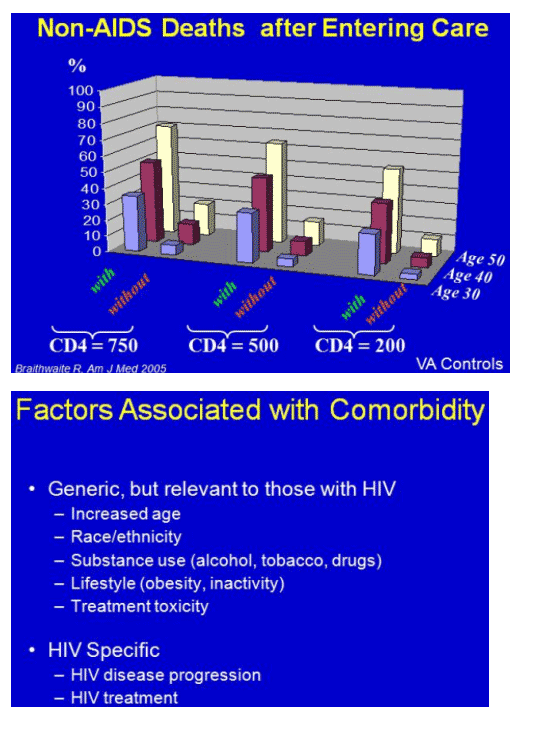
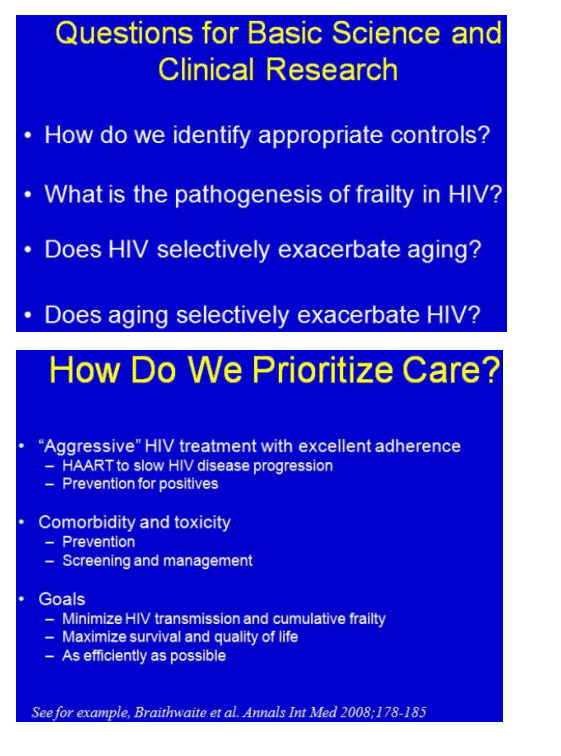
|
| |
|
 |
 |
|
|